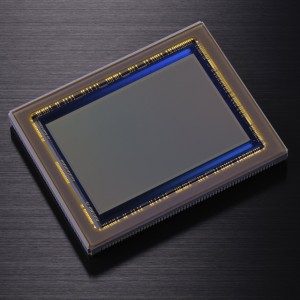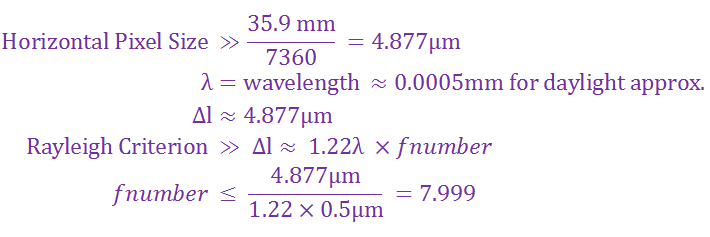Last Updated: Aril 22, 2012 | By Brian Tobey Email Google+
NIKON D800 AS A SYSTEM
SUMMARY

INTRODUCTION
The Nikon D800 is a camera capable of capturing remarkable images at ultra fine detail. It is among the top cameras in Nikonís DSLR lineup. Featuring a 36MP sensor with a vast dynamic range, it has the ability to capture images at some of the highest qualities and can compete against cameras far outside its price range. Whether used in the studio or in the field, the camera is designed with nearly every photographer in mind. The camera can produce great imagery, even in difficult low light conditions. It has the capacity to shoot at high ISO sensitivities up to 6400, with minimal presence of noise.
However, a camera with this aptitude generates an abundant amount of dialog and hype, much of which can be confusing and tedious to follow. Facts are often distorted to suit arguments or individual photographerís viewpoints. In these discussions it is important to remember photography fundamentals, functional purpose, design intents, and physical limitations. This article discusses the D800 as a system from a technical approach and how it can fulfill various photography needs. It also derives some of the expected limitations.
SYSTEM PERSPECTIVE
The Nikon D800, or any DSLR, should be viewed as a system. This includes the lens, camera, and all supporting equipment required to take a photograph. Why is it important to look at it as a system? Because too often concepts are over examined and broken down to an individual component level. Although this can be convenient to portray a property or technical principle, the end product must work as a system. A D800 is not very effective by itself. It requires a lens to make it useful. This is why when discussing things like diffraction, motion blur, noise, dynamic range, and color depth, it is important to analyze it as a system, because as system it is used. A secondary analysis can later be performed regarding subjects like resizing, re-sampling, or post processing noise and ISO pushing, as these all require an anticipated purpose or knowledge of intent of a resulting photograph.
DIFFRACTION
HOW DIFFRACTION IMPACTS THE D800
Let us start by analyzing how diffraction impacts the use of the D800. Diffraction is a property of physics and light. It takes place in the lens and creates a fuzzy halo artifact. This artifact is known as an airy disk and expands as aperture decreases or f-number increases. As the airy disk becomes large, it impacts neighboring pixels and ultimately softens or blurs the resulting image. The sensorís pixel size dictates the observable amount of blur caused by diffraction. The smaller the pixel size the more diffraction can impact the image when viewed at 100%. This is the reason why point and shoot lenses top out at f/5.6. Keep in mind that the air disk is not a digital or discrete consequence, but a continuous property of light that is applicable to both film or digital. Just ask an experienced photographer from the past, and they can explain aspects of diffraction on 35mm or medium format or even 8x10 formats.
So where does diffraction begin to impact the D800? Well first we need to know the pixel size. This can be approximated by dividing the sensor size by the number of pixels on a per axis basis.

THE MATH
According to these theoretical approximations, we conclude that ideally we would want to shoot the D800 at f/8 or below in order to prevent diffraction from softening pictures. However, the calculation is flawed in that in accounts for only a single frequency. In our case, we selected 500nm wavelength, which is the color green, the most sensitive to our eyes, to replicate daylight. However, daylight has many colors or frequencies and therefore we must consider the entire bandwidth. This calculation becomes more complicated, but when analyzed across a bandwidth, diffraction becomes more forgiving, which means we can shoot the D800 up to f/11 and be perfectly satisfied with the results!
Note that recently announced Nikon D3200 has an even denser sensor, with 24.2 MP on a DX size sensor. It becomes diffraction limited around f/6.3. This is of more concern than the D800, as most DX lenses are not optimal until f/8. To maximize the quality of the D3200, Iíd shoot at f/5.6 and stick with the Nikon 35mm f/1.8G or 50mm f/1.8G. I have always been a fan of those lenses. And if you notice, Nikon shot a lot of the sample images at f/5.6 using some expensive glass.
MOTION BLUR

HOW MOTION BLUR IMPACTS THE D800
The D800 is more susceptible to observing motion blur. Simply because it has a higher resolution sensor compared to other full frame sensors (35mm) with fewer megapixels, the D800 can resolve smaller displaced motion. This is simply because you have more resolving power with the 36MP sensor. For example, if you were to exhibit motion blur that would blur the distance of 3 pixels on a D800, a D700 (12MP) may not see any of it, because it has 3 times larger pixels. All blur on the D700 would fall into one pixel bucket and appear static, where the D800 would span across 3 and appear blurred. Resizing the D800 down to the D700ís 12MP can replicate the D700. Just remember by resizing you now no longer have a 36MP image. Again, resizing an image is all based on the intended presentation of the result and not an aspect of the camera. This is why I look at it as a secondary analysis.
NIKON D800 DYNAMIC RANGE
DYNAMIC RANGE LIMITATIONS D800
The D800 has unprecedented dynamic range at ISO 100. It surpasses any DSLR ever before it. But beyond ISO 400, the Nikon D4 and D3s begin to outperform. This is not to say the D800 is inadequate (in fact the D800 maintains a decent dynamic range throughout its ISO gamut), but a caution that there is not much you can post process to improve dynamic range without taking successive identical images (similar to HDR). If you care most about dynamic range beyond ISO 400, the D4 or D3s is a better suited tool. Resizing and re-sampling wonít improve dynamic range. The same is true for color bit depth.
NOISE Ė ISO PERFORMANCE
ISO SUMMARY
ISO is a measurement of light sensitivity. As you increase the ISO on a camera, the sensors gain increases making it more sensitive to light. Consequently it also makes it more sensitive to noise. The D800ís base ISO is 100 and can be increased up to ISO 6400. It can be expanded down to ISO 50 through ISO 25,000. However at ISO 50, you do not gain any image performance as it behaves like a neutral density filter or attenuator.
Much like its processor the D700, the D800 has an impressive ISO range with excellent noise performance. The D800 compared to the D700 is quite similar, but with a lot more pixels! This means that although the D700 and D800 when analyzed on a pixel level (100%), you are not comparing apples to apples, because one is 36MP while the other is 12MP. Or are you? Again this depends on the end result or final intent of how a photograph will be displayed.
CHARACTERIZATION OF NOISE
Noise can be classified in terms of signal to noise ratio (SNR) which indicates the magnitude of noise. Noise can also be characterized in terms of frequency. Higher frequency noise is often better than low frequency noise. Noise can also be analyzed on a per channel basis and broken into chrominance noise (color) and luminance noise (B+W).
RESIZE AND RESAMPLE
When viewed at 100% the D800 is more than a 1 EV (f-stop) behind the D700 and more on par with a Nikon D90. However, when resized down to 8MP, the D800 slightly outperforms the D700! How can this be? The D800 exhibits higher frequency noise with its finer 36MP sensor and therefore when resized or re-sampled, the signal adds coherently, but the noise does not. This improves the SNR and thus the D800 pairs up to the D700.
Again, it all comes back to the intended result. If you expect to use the D800 and all its megapixels, then the D700, D4, D3s will outperform it by 1 EV (f-stop). However, if your end result is a smaller image than 36MP, for print or for web use, then the D800 is just as adequate as the D4 or D3s in terms of SNR.
CONCLUSION
THE RIGHT TOOL
The D800 proves to be an impressive camera. But with all the hype, it is too easy to forget purpose. If your intent is to capture incredible detail, than surely the D800 is your camera. And although the D800 images can be resized down to a smaller size to mimic a D4 or D700, not everything is retained. The D4 or D3s when used at high ISOs (above 400) can still outperform the D800 when resized in terms of dynamic range and color depth. It is important to remember the intended use of a tool and the expected result you are trying to gather.
The D800 is not quite a replacement for the D700. Those who are looking to get incredible light sensitivity performance will not be satisfied with the D800. Instead the D800 remains a tool used best for capturing fine detail with tremendous dynamic range and will blow the pants off any DSLR at ISO 100. Those who are looking for a D700 replacement will have to wait, as the Nikon D4 is not in the same price range. However, the D3s has come down in price by about $1000! Although, purchasing a D3s may be a good short term solution, I do suspect Nikon will be releasing a new FX camera in 2013 that will be more affordable than the D700 and D800. It also may include the D3sí sensor or D4ís sensor.
RELATED ARTICLES
Nikon D600 Review | Nikon D800 Review | Nikon D4 Review | Nikon D3200 Review